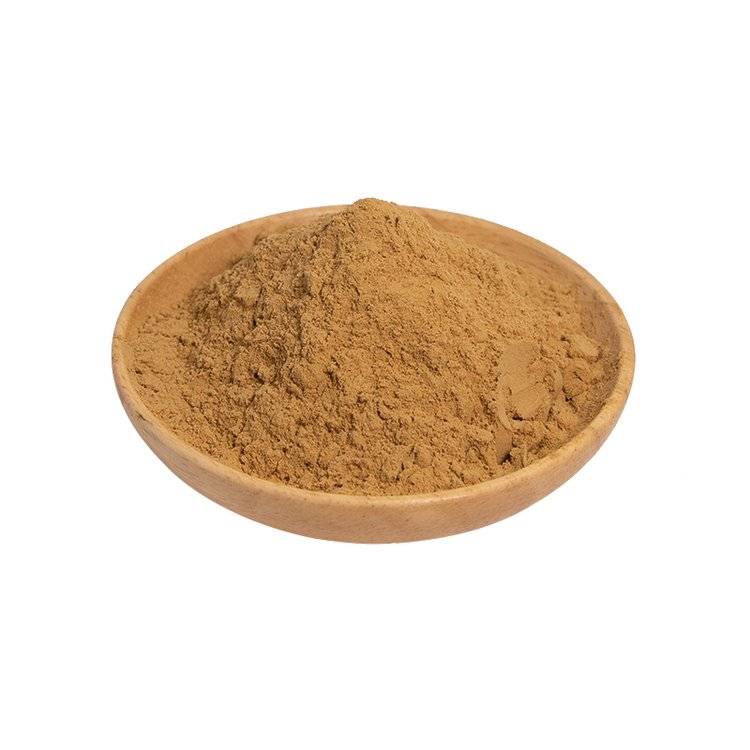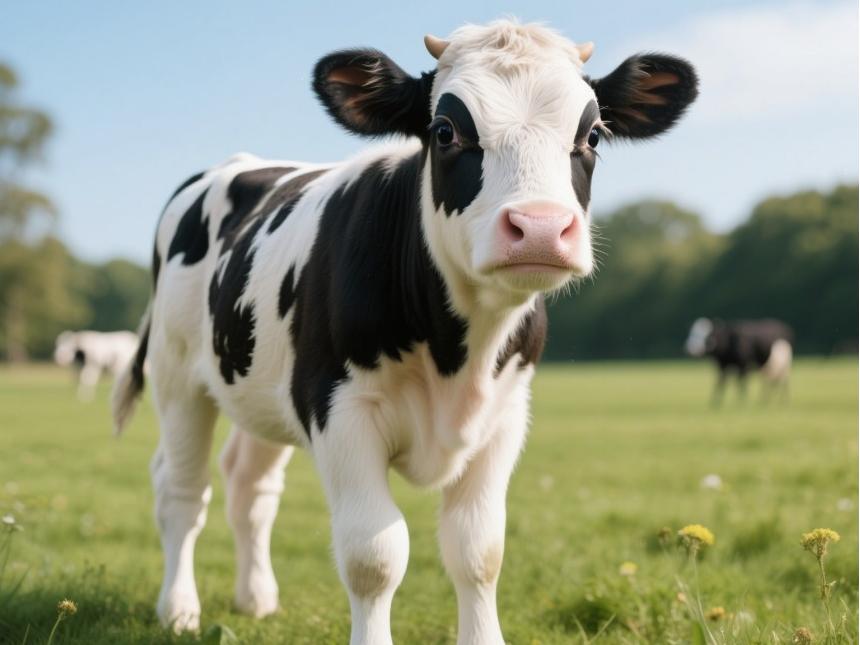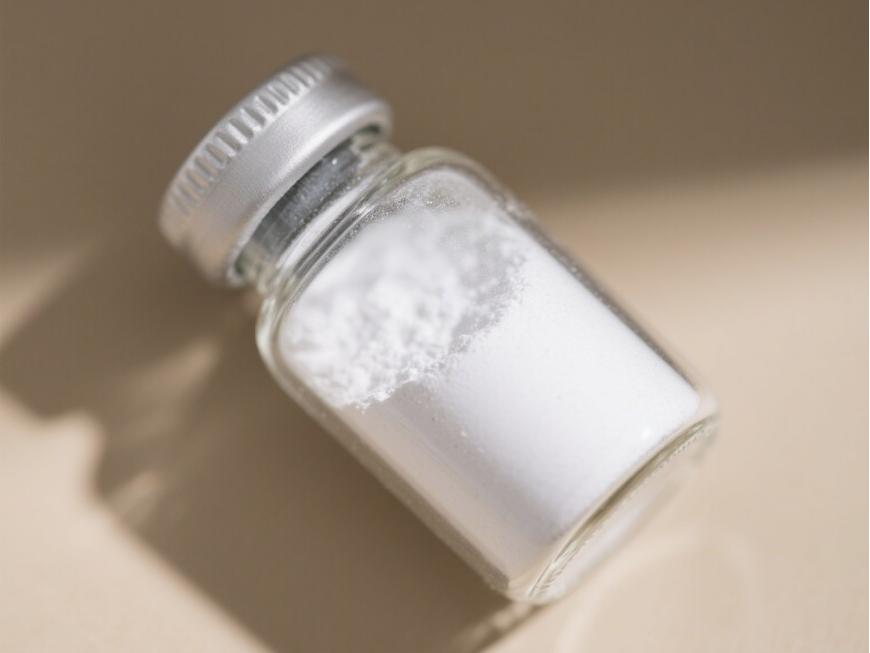Study on Dandelion Drinks
Dandelion is a perennial herb in the Asteraceae family. According to the Pharmacopoeia of the People's Republic of China (2020 edition), dandelion is a plant in the genus Taraxacum, which is divided into Taraxacum mongolicum Hand. Mazz, Taraxacum mongolicum, and several plants in the same genus [1]. The dandelion plant is bitter, sweet and cold in nature; it enters the liver and stomach meridians, clearing away heat and toxins, reducing swelling and dispersing lumps, clearing the liver and improving eyesight, and promoting diuresis to treat strangury. It is used to treat boils, carbuncles, breast abscesses, internal abscesses, strangury with painful urination, damp-heat jaundice. The whole plant is used medicinally, including the roots [2].
Dandelion is a common plant with a wide distribution worldwide. There are more than 2,000 species of dandelion worldwide, and 75 species have been identified in China. Dandelion contains a variety of chemically active substances. Scholars at home and abroad have successively extracted more than 10 sterol compounds, more than 10 triterpenoid compounds, more than 10 sesquiterpenoid compounds, 26 phenolic acid compounds [3], 20 flavonoids [4], as well as various polysaccharides, coumarins and various fatty acids from dandelion. Polysaccharides are one of the important active substances in dandelion.
Dandelion extract powder is extremely rich in polysaccharides. The polysaccharides currently found in dandelion include fructose, sucrose, inulin, etc., accounting for 30% to 50% of the dry weight of dandelion. The polysaccharide content of wild dandelion is significantly higher than that of artificially cultivated varieties [5]. Studies have found that the pharmacological effects of dandelion cover many aspects such as anti-inflammatory, anti-cancer, anti-tumor, anti-oxidation, and antibacterial [6]. Dandelion is used in drinks not only to cool off in the summer, but also to inhibit bacteria, fight viruses, improve immunity, and regulate physiology. This paper summarizes and summarizes the literature on the application of dandelion in drinks, providing a certain reference for the development of dandelion resources.
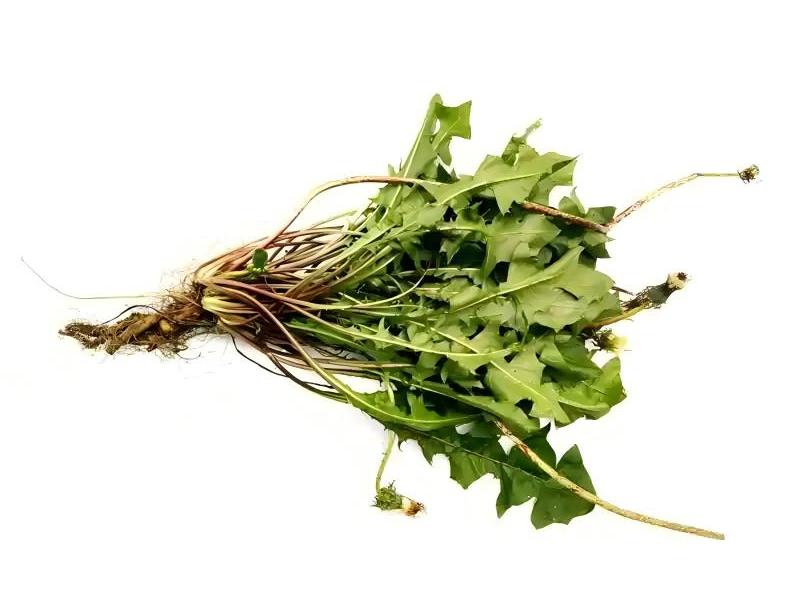
1 The current development of dandelion drinks
1.1 Nutritional value of dandelion
Dandelion contains a variety of nutrients, such as carbohydrates, proteins, cellulose and a variety of mineral elements. According to an analysis [7], every 100 g of fresh dandelion contains 84 g of water, 11 g of carbohydrates, 3.6 g of protein, 3.1 g of ash, 2.1 g of crude fiber, 1.1 g of fat, 47 mg of vitamin C, 7.35 mg of carotene, 1.9 mg of niacin, vitamin B2 0.39 mg, vitamin B1 0.03 mg, potassium 325 mg, calcium 216 mg, phosphorus 115 mg, sodium 78 mg, magnesium 53 mg, iron 12.4 mg, manganese 0.57 mg, copper 0.45 mg, zinc 0.35 mg and selenium 14.7 μg, In addition, dandelion is rich in amino acids such as aspartic acid 1,073.2 mg, glycine 466.0 mg, alanine 502.0 mg, threonine 709.9 mg, serine 381.8 mg, glutamic acid 1,073.2 mg, leucine 40.2 mg, arginine 550.6 mg, proline 526.5 mg, tyrosine 325.6 mg, phenylalanine 498.4 mg, lysine 325.6 mg and histidine 180.9 mg, with a total of up to 8,143 mg/100 g of amino acids, significantly higher than wild counterparts.
1.2 Analysis of the efficacy of dandelions
Dandelion extract is rich in polysaccharide active substances, which are one of the most important substances in dandelions and are widely found in the whole plant. Modern pharmacological studies have shown that dandelion polysaccharides have pharmacological effects such as anti-inflammatory, antibacterial, antioxidant, anti-tumor, hypoglycemic and immune-enhancing effects. For example, Zhou Yani et al. [8] established a mouse model of ulcerative colitis combined with dysbiosis by feeding mice with lincomycin to establish a model of ulcerative colitis. using a control experiment to study the effect of dandelion polysaccharides on the intestinal flora and anti-inflammatory effect of mice with ulcerative colitis and dysbiosis. The study showed that dandelion polysaccharides can reduce the secretion of inflammatory cytokines and adjust the structure of the intestinal flora in mice.
Xu Jin et al. [9] proved that dandelion polysaccharides have antioxidant capacity through dandelion polysaccharide reducing power experiments, DPPH scavenging capacity assays and superoxide anion scavenging capacity assays. Li Chunlan et al. [10] studied the hepatoprotective effect of dandelion polysaccharides by administering dandelion polysaccharides to mice with carbon tetrachloride liver damage. dandelion polysaccharides have a protective effect on mice with liver damage. Nie Wenjia et al. [11] found that dandelion polysaccharides have an inhibitory effect on Escherichia coli, Bacillus subtilis and Staphylococcus aureus when studying the active ingredients and pharmacological effects of dandelion. Liu Xiaoyan et al. [12] proved through a series of experiments that dandelion polysaccharides can significantly inhibit the proliferation, migration, invasion, etc.
Flavonoids are an important class of active substances in dandelion extract. Studies have shown that dandelion flavonoids also have anti-inflammatory, antibacterial, antioxidant, anti-tumor, and cardioprotective effects. Wang Chao et al. [13] studied the antioxidant protective effect and mechanism of dandelion flavonoids on chronic obstructive pulmonary disease caused by tobacco smoke in mice by feeding dandelion flavonoids to mice with chronic obstructive pulmonary disease caused by tobacco smoke, and using lung function-related indicators as the standard. The study proved that dandelion flavonoids have good antioxidant capacity; Luo Lili et al. [14] proved the antibacterial properties of dandelion flavonoids by perforation method and ultra-high performance liquid chromatography tandem mass spectrometry; Hou Jingling et al. [15] screened the anti-inflammatory components of dandelion by the dimethylbenzene-induced mouse ear swelling model, and then studied the anti-inflammatory effect of the anti-inflammatory ingredients through controlled experiments. The research experiments proved that dandelion flavonoids have a good inhibitory effect on inflammation, and that the anti-inflammatory effect of high concentrations of dandelion flavonoids is the best.
Dandelion extract powder also contains various active substances such as sterol compounds, terpenoids and phenolic acids. Many scholars have found that these substances have multiple functions, including anti-inflammatory, antibacterial, antioxidant, anti-tumor, hypoglycemic, diabetes relief, liver protection, gallbladder protection and anti-fatigue effects [16-23].
1.3 Dandelion liquid beverage development
China's beverage market is currently booming, with tea and fruit and vegetable juice drinks accounting for an increasing proportion of consumption. This is closely related to the transformation of people's consumption concepts. With economic development, people's living standards have gradually improved, and their consumption concepts have also changed from seeking cheap and affordable products to choosing healthier and more cost-effective products. The demand for beverages has also shifted from simply quenching thirst to health. Based on this concept, it is of practical significance to develop dandelion, which has multiple functions, into a beverage.
At present, many researchers have explored and studied the development of dandelion drinks. Xiang Feng [7] used dandelion and chrysanthemum as raw materials, and prepared a concentrated liquid by cleaning, crushing, and ultrasonic-assisted ethanol extraction. Single-factor experiments were carried out with citric acid, white sugar, and honey, respectively. On the basis of the single-factor experiments, a 3-factor (citric acid, white sugar, honey) 3-level orthogonal test, and the results were analyzed by the analysis of variance, and finally determined that the optimal formula for the dandelion and chrysanthemum compound beverage is 80% dandelion juice, 20% chrysanthemum juice, 4% sugar, 0.02% citric acid, and 2% honey.

The compound beverage made according to this formula has a clear color, moderate sweetness and sourness, and an overall light yellow color. It also has the characteristic light fragrance of dandelion and chrysanthemum. Xiong Yaqin et al. [24] used sprouted brown rice, reishi mushrooms and dandelion as the main ingredients, and used a microbial fermentation method to produce a fermented sprouted brown rice reishi mushroom liquid. The dandelion was washed, dried, crushed and sieved, extracted with 60 °C water, vacuum filtered, concentrated, vacuum freeze-dried and crushed into a powder. Finally, single factor experiments and orthogonal experiments were used to determine the optimal formula as 40% reishi mushroom fermentation liquid, dandelion extract 0.35%, xylitol 4%, citric acid 0.005%, stabilizer 0.3% (prepared from sodium carboxymethyl cellulose and sodium alginate in a ratio of 1:2). The resulting compound beverage has a soft taste, moderate bitterness, and a clear coffee-colored liquid, and has good health benefits.
Sun Yang et al. [25] used dandelion and monk fruit as raw materials. They prepared the dandelion and monk fruit into a slurry by washing, microwaving, crushing and adding water, and added stabilizers (pectin 0.09%, xanthan gum 0.04%, sodium carboxymethyl cellulose 0.2%). Finally, through single factor experiments and orthogonal experiments, the optimal formula was determined to be dandelion pulp mixed with monk fruit liquid in a ratio of 7:3, liquid-to-material ratio (mixed stock solution: water) 1:60, sugar 20%, citric acid 0.5%. The dandelion-monk fruit compound beverage prepared using the above method has the best stability, clear color, no layering or precipitation, with a unique aroma of Luo Han Guo and the fresh scent of dandelion.
Ning Le et al. [26] used ultrasound to extract polysaccharides from dandelion. The optimal extraction conditions for dandelion polysaccharides were determined using single-factor experiments and response surface methods: a liquid-to-solid ratio of 1:30 (g:mL), three extractions for 38 minutes at a temperature of 55 °C. The optimal recipe is an extract of dandelion polysaccharides with a total volume of 60%, 4% xylitol, 2% β-cyclodextrin, and 0.6% citric acid. The drink prepared in this way has a neutral taste and the right amount of sweetness.
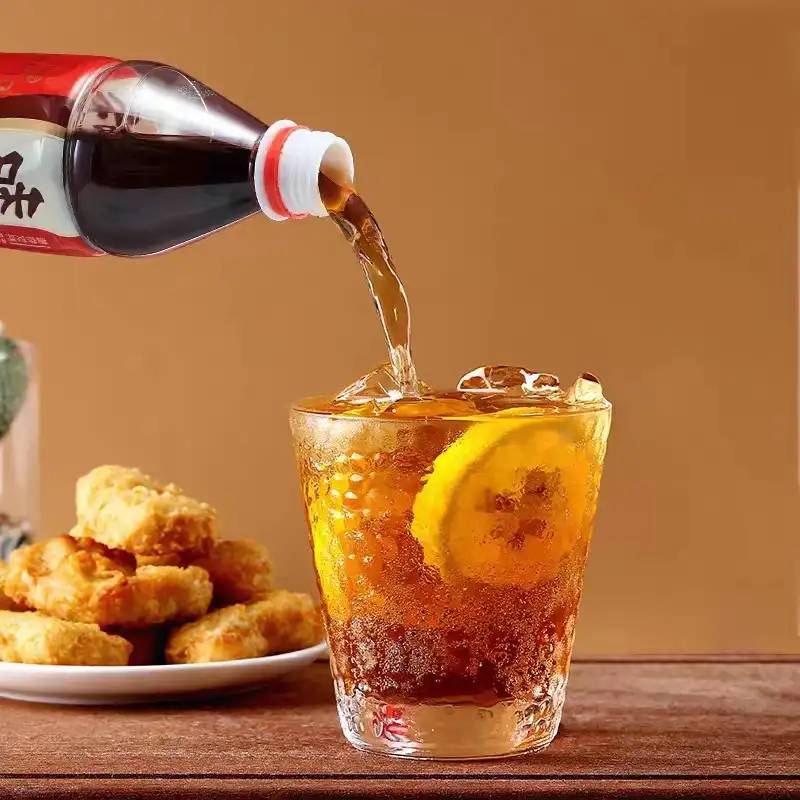
Jia Juan et al. [27] used dandelion, red dates and wolfberry extracts as the main ingredients, and determined the optimal formula through single factor experiments and orthogonal experiments using mixed juice preparation: 15% dandelion, 12% red dates, 7% wolfberry, 7% sucrose, 0.01% citric acid. The finished product is translucent in color and has a delicious sweet and sour taste. Ren Yuyu et al. [28] extracted dandelion flavored beverage by killing, drying, and boiling water to extract dandelion. In addition, Qiao Xing et al. [29] used dandelion and corn silk as raw materials, Su Jie et al. [30] used citrus and dandelion as raw materials, and Li Yueying et al. [31] used dandelion and oats as the main raw materials to obtain compound beverages with different flavors through a series of processes. The above exploratory research not only enriches the variety of beverages, but also opens up ideas for the development of dandelion resources and provides practical development methods.
The polysaccharide content of dandelion root is significantly higher than that of the rest of the dandelion plant. Dandelion root basically contains all the compounds in the whole dandelion plant, and has corresponding pharmacological effects. Many researchers have explored the application of dandelion root in beverages. For example, Liu Shanshan et al. [32] used dandelion root enzymatic solution as the raw material, and determined the formula through single factor experiments and orthogonal experiments. The formula was determined to be diluting the dandelion root enzymatic solution 1:3.5, then adding 2% cotton sugar and 0.04% citric acid. Wu Haiting et al. [33] cleaned and crushed the dandelion root, and boiled with water at a ratio of 1:30 for 1.5 h to obtain the original solution. The formula was determined by orthogonal optimization experiments to be dandelion root extract 40%, white sugar 8%, citric acid 0.1%, and stabilizer 0.1%. The finished beverage is a clear orange-brown liquid with a sweet, refreshing aroma and a barley tea flavor.
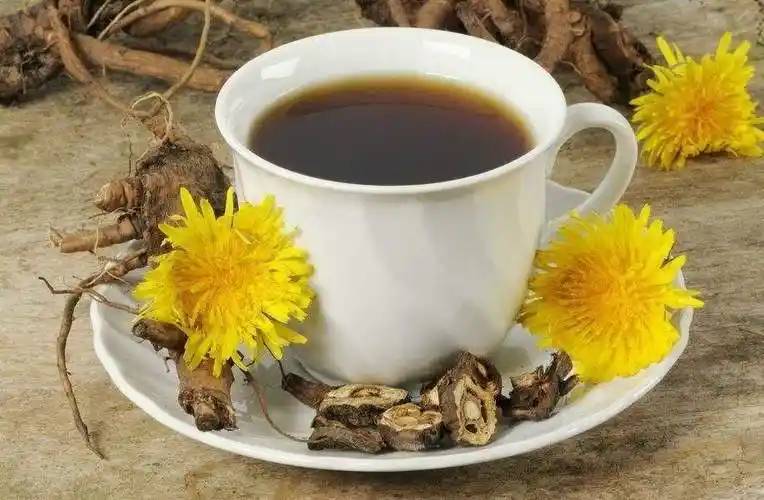
Liu Shanshan et al. [34] washed, dried, and roasted dandelion root, and then conducted single-factor experiments with it and with tartary buckwheat and cassia seeds, respectively. Orthogonal experiments were then conducted on the basis of the single-factor experiments to determine the formula as 40% dandelion root particles and 25% cassia seeds. The tea brewed from the tea bags prepared according to the above formula has a clear broth and a soft taste. Zhang Jing et al. [35] extracted the polysaccharides from dandelion root by hot water, and used single factor test and orthogonal test to determine the optimal ratio of each ingredient. The optimal formula is 64% dandelion extract, 3.04% dandelion polysaccharide, 0.08% citric acid, and stevia. The beverage prepared with this ratio has a bright color and a unique taste.
1.4 Development of dandelion solid drinks
A solid drink is a solid product made from sugar, milk and dairy products, eggs or egg products, fruit juice or edible plant extracts as the main ingredient, with the addition of appropriate excipients or food additives. It is made into a powder, granules or lumps. Compared to liquid drinks, solid drinks are more convenient to carry and store. There has been some research into the development of dandelion resources in terms of solid drinks. Zhang Jingchen et al. [36] ground black ginseng, sieved, and then hot-soaked with water at a ratio of 1:15 for 1 h three times. After that, it was filtered and concentrated, and the dandelion was washed, soaked with water at a ratio of 1:10 at 90 °C for 1 h, repeated 3 times, and then filtered, concentrated, and freeze-dried and crushed for later use. Through single factor experiments and response surface experiments, the optimal formula was determined to be 14.8% black ginseng extract, 9.9% dandelion extract, 55.6% isomalt, and 9.7% maltodextrin. The solid beverage made according to the above formula has good stability, an attractive appearance, and a moderate sweetness and mouthfeel.
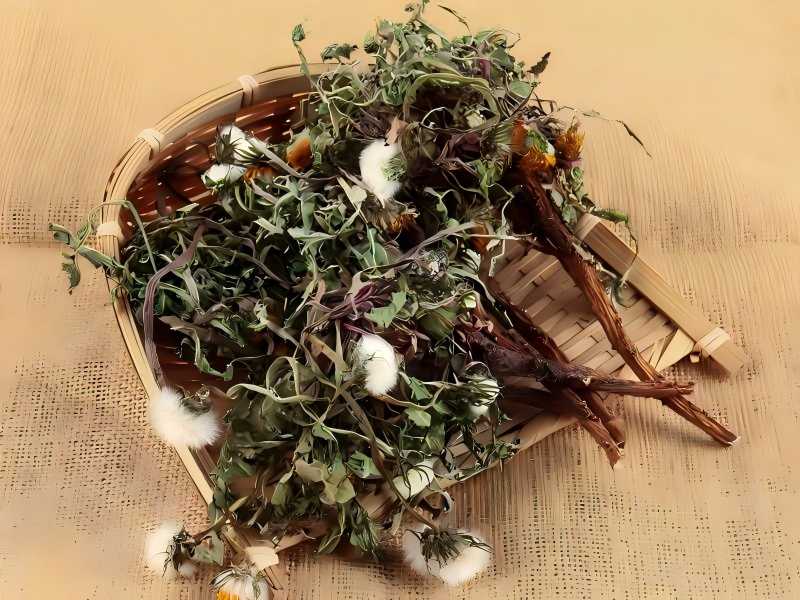
2 Conclusion
China is a vast country with abundant resources, especially plant resources. Dandelions are abundant in variety, extremely adaptable to their environment, and have very low requirements for soil fertility. They are widely distributed in China. Research into the development of various drinks from dandelions provides ideas and inspiration for the development of dandelion resources. Moreover, with the development of the economy and people's living standards improving day by day, people's consumption concepts and food concepts are gradually shifting towards nutrition and health, and the market share of healthy green foods and drinks is further expanding. Dandelion drink products that have been developed in China include dandelion-chrysanthemum, dandelion-lingzhi, dandelion-luohanguo, dandelion-red date-wolfberry and other compound drinks. In addition to research on liquid drink products, there has also been a small amount of research on solid drinks, opening up new ways to exploit dandelion resources in the beverage sector.
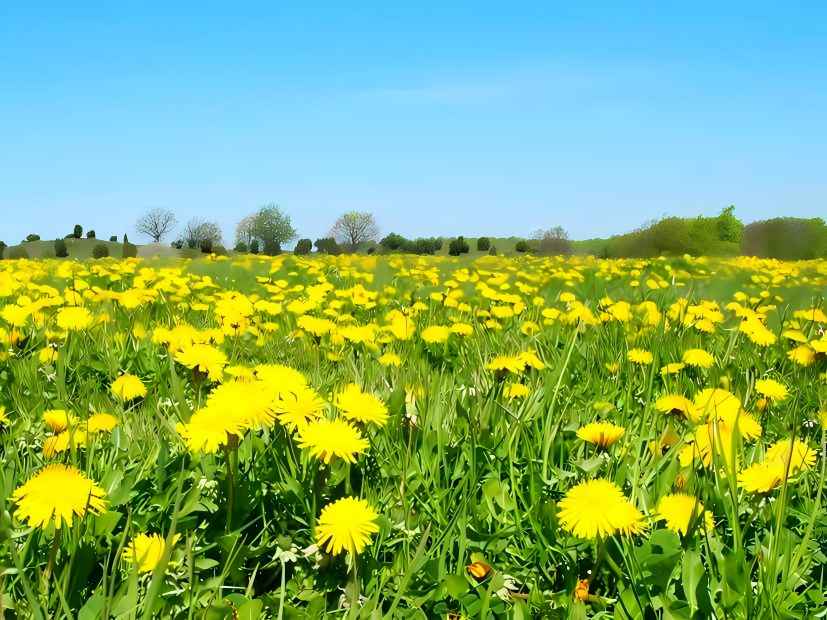
References
[1] National Pharmacopoeia Commission. Pharmacopoeia of the People's Republic of China: Part I [M]. Beijing: China Medical Science and Technology Press, 2020.
[2] Shang Zhijun. New Revised Materia Medica [M]. Hefei: Anhui Science and Technology Publishing House, 1981.
[3] Ren Hanshu, Zhu Wenqing, Zheng Yuanyuan, et al. Research progress on the functional components and bioactivity of dandelion [J]. Food and Drugs, 2022, 24(2): 2-5.
[4] MItEK M, MARCIN ČÁKOVÁ D, LEGÁTH J. Polyphenols content, antioxidant activity, and cytotoxicity assessment of Taraxacum officinale extracts prepared through the micelle-mediated extraction method [J]. Molecules, 2019, 24(6): 1-14.
[5] Zou Shihui. Research progress on the bioactive substances of dandelion [J]. Heilongjiang Agricultural Science, 2019, 302(8): 186-189.
[6] Meng Ran, Xue Zhizhong, Lu Xuelin, et al. Research progress on the effective components and pharmacological effects of dandelion [J]. Jiangsu Agricultural Science, 2021, 49(9): 36-43.
[7] Xiang F. Extraction of effective components from dandelion and product development [D]. Shihezi: Shihezi University, 2020.
[8] Zhou Y, Guo Y, Liu C, et al. Research on the regulation of intestinal flora and anti-inflammatory effect of dandelion polysaccharide on mice with ulcerative colitis and flora imbalance [J]. Biomedical Engineering and Clinical ,2022,26(4):414-419.
[9] Xu J, Pang Q, Sun J, et al. Optimization of the extraction process of dandelion leaf polysaccharides assisted by ultrasonic cell disruption and in vitro antioxidant activity [J]. Food Research and Development ,2023,44(10):132-139.
[10] Li Chunlan, Zhao Liang. Protective effect of dandelion polysaccharide on carbon tetrachloride-induced liver injury in mice [J]. Chinese Journal of Practical Neurology, 2010, 13(17): 33-35.
[11] Nie Wenjia, Xu Shuai, Zhang Yongmei. Research progress on the active ingredients and pharmacological effects of dandelion [J]. Journal of Liaoning University of Traditional Chinese Medicine, 2020, 22(7): 140-145.
[12] Liu Xiaoyan, Long Feng, Zhao Yu, et al. Effects of dandelion polysaccharides on the migration and invasion of triple-negative breast cancer cells based on the PI3K/Akt/GSK-3β pathway [J]. Natural Product Research and Development, 2023, 35(7):1135-1143.
[13] Wang Chao, Chen Fang, Hu Kaishun, et al. Antioxidant protective effect and mechanism of dandelion total flavonoids on chronic obstructive pulmonary disease caused by tobacco smoke [J]. International Journal of Geriatrics Medicine, 2023, 44(3):257-264.
[14] Luo Lili, Xue Gumei, Qi Xiangfan, et al. UPLC-MS/MS analysis of the antibacterial effects and metabolite differences of different parts of dandelion [J]. Journal of Nuclear Agriculture, 2022, 36(6): 1183-1192.
[15] Hou Jingling, Zhou Xiaonan, Feng Shasha, et al. Research on the anti-inflammatory effect of different dandelion extracts [J]. Chinese Journal of Veterinary Medicine, 2017, 53(3): 64-66.
[16] Meng Ran, Xue Zhizhong, Lu Xuelin, et al. Research progress on the active ingredients and pharmacological effects of dandelion [J]. Jiangsu Agricultural Sciences, 2021, 49(9): 36-43.
[17] Yin Yifan, Li Hewei, Tao Tianxiu, et al. Research on the protective effect of dandelion sterols on acute severe hepatitis based on JAK2/STAT3 and JNK signaling pathways [J]. Pharmacology and Clinical of Traditional Chinese Medicine, 2023, 39(8):57-61.
[18] Zuo Mingshun, Dong Zhicheng, Zuo Yu, et al. Research progress on the potential mechanism of dandelion against bladder cancer [J/OL]. Chinese Journal of Experimental TCM Formulae: 1-9 [2023-06-08]. https://doi.org/10.13422/j.cnki.syfjx.20231124.
[19] Ge B, Wang Z, Zhou H et al. Research progress on the pharmacological effects of dandelion sterols [J]. Advances in Animal Medicine, 2020, 41(9): 102-105.
[20] Kang J, Wang H. Research progress on the anti-inflammatory effects of dandelion triterpenoids [J]. Chinese Wild Plant Resources ,2015,34(1):37-39.
[21] Pan Mingyue , Li Tao , Chen Wanyu , et al. Research on the antioxidant active ingredients and mechanism of dandelion based on HPLC method and network pharmacology [J]. Journal of Jilin University (Natural Science Edition),2023,61(2):437-442.
[22] Song Yumin. Isolation and identification of antibacterial components in dandelion [D]. Yangling: Northwest A&F University, 2007.
[23] Lin Jinyong, Chen Sibao. Research progress on the anti-tumor activity and mechanism of sesquiterpene lactones [J]. Zhongnan Pharmacy, 2023, 21(6): 1589-1598.
[24] Xiong Yaqin, Luo Jianguang. Development of a compound drink made from germinated brown rice, reishi mushroom and dandelion [J]. Processing of Agricultural Products, 2023(2):5-9.
[25] Sun Yang, Wang Tingting, Wang Shuling, et al. Stability study of a compound drink made from dandelion and monk fruit [J]. China Fruits and Vegetables, 2022,42(4):16-20.
[26] Ning Yue, Zheng Nan, Cai Jianyan, et al. Extraction of dandelion polysaccharides and development of its beverage [J]. Cereals, Oils and Fats, 2021, 34(12): 86-89.
[27] Jia Juan, Ma Chuanlan, Li Yapeng, et al. Process development of dandelion, wolfberry and red date compound health beverage [J]. Chinese Fruit and Vegetable ,2021,41(9):37-44.
[28] Ren Yuyu , Ren Yi , Zhao Bingbing , et al. Development of a low-sugar dandelion drink [J]. Ginseng Research ,2021,33(1):37-39.
[29] Qiao Xing , Li Shuangqi , Li Xiexin . Optimization of the formula for a corn silk and dandelion complex beverage using orthogonal experiments [J]. Cereals, Oils and Fats, 2020, 33(9): 60-63.
[30] Su J, Zhang H, Wang R. Study on the processing technology of a citrus and dandelion health drink [J]. Food Science and Technology and Economics, 2020, 45(1): 115-118.
[31] Li Yueying, Wang Yuenan, Cheng Nana, et al. Research on the production process of dandelion and oat milk compound health drinks [J]. Agricultural Products Processing, 2018(48):38-40.
[32] Liu Shanshan. Research and development of coffee-like dandelion root products [D]. Baoding: Hebei Agricultural University, 2018.
[33] Wu Haiting, Zhang Xinyuan, Cui Yanyan. Research and development of dandelion drinks with the flavor of barley tea [J]. Processing of Agricultural Products, 2019(4):20-23.
[34] Liu Shanshan, Liu Yaqiong, Lin Haopeng, et al. Optimization of the roasting process of dandelion root and development of coffee-like flavored tea bags [J]. Food Research and Development, 2018, 39(19): 86-92.
[35] Zhang Jing, Wen Nuan, Liu Yangyang, et al. Extraction of dandelion root polysaccharides and development of dandelion polysaccharide beverage [J]. Agricultural Products Processing, 2018(1): 13-17.
[36] Zhang Jingchen, Liu Shiwei, Liu Shengnan, et al. Response surface methodology optimization of the formula process for a mixed black ginseng and dandelion root solid beverage [J]. Journal of Jilin College of Medicine, 2023, 44(4): 260-264.


 English
English French
French Spanish
Spanish Russian
Russian Korean
Korean Japanese
Japanese